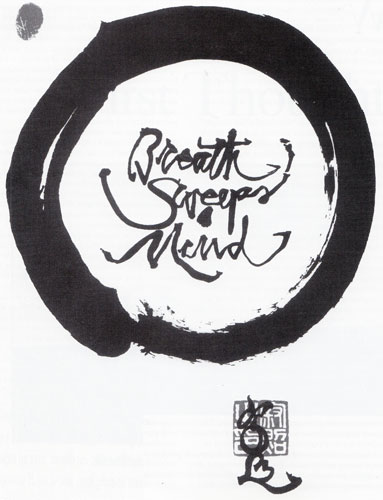And how, monks, does a monk abide contemplating the body as body? Here a monk, having gone into the forest, or to the root of a tree, or to an empty place, sits down cross-legged, holding his body erect, having established mindfulness before him. Mindfully he breathes in, mindfully he breathes out. Breathing in a long breath, he knows that he breathes in a long breath, and breathing out a long breath, he knows that he breathes out a long breath. Breathing in a short breath, he knows that he breathes in a short breath, and breathing out a short breath, he knows that he breathes out a short breath. He trains himself, thinking: “I will breathe in, conscious of the whole body.” He trains himself, thinking: “I will breathe out, conscious of the whole body.” He trains himself, thinking: “I will breathe in, calming the whole bodily process.” He trains himself, thinking: “I will breathe out, calming the whole bodily process.” Just as a skilled turner, or his assistant, in making a long turn, knows that he is making a long turn, or in making a short turn, knows that he is making a short turn, so too a monk, in breathing in a long breath, knows that he breathes in a long breath . . . and so trains himself, thinking: “I will breathe out, calming the whole bodily process.”
So he abides contemplating body as body internally, contemplating body as body externally, contemplating body as body both internally and externally. He abides contemplating arising phenomena in the body, he abides contemplating vanishing phenomena in the body, he abides contemplating both arising and vanishing phenomena in the body. Or else, mindfulness that “there is body” is present to him just to the extent necessary for knowledge and awareness. And he abides independent, not clinging to anything in the world. And that, monks, is how a monk abides contemplating body as body.
♦
Excerpted from Thus Have I Heard: The Long Discourses of the Buddha translated by Maurice Walsh, with permission from Wisdom Publications.
Thank you for subscribing to Tricycle! As a nonprofit, we depend on readers like you to keep Buddhist teachings and practices widely available.
